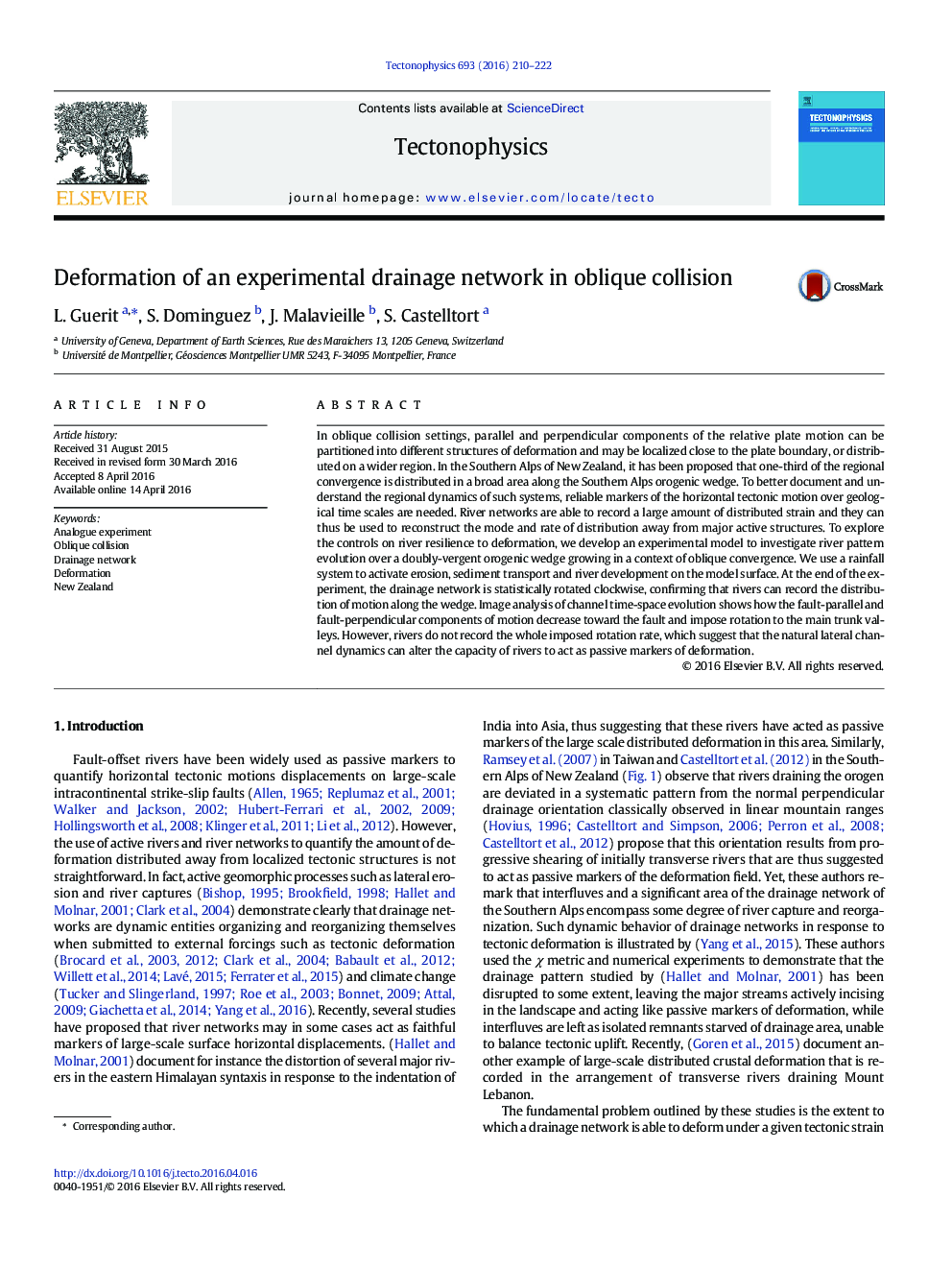| کد مقاله | کد نشریه | سال انتشار | مقاله انگلیسی | نسخه تمام متن |
|---|---|---|---|---|
| 5781761 | 1413898 | 2016 | 13 صفحه PDF | دانلود رایگان |
- We developed an experimental doubly-vergent asymmetric wedge in oblique convergence setting including surface processes.
- Model deformation is only partially accommodated on the main fault.
- â¼Â 30% of the backstop-parallel and â¼Â 50% of the backstop-perpendicular components are diffusively distributed across the wedge.
- The total amount of shear does not change but it is distributed over an increasingly larger area during the experiment.
- The drainage network rotates with respect to the main axis of the range but channels are dynamic markers.
In oblique collision settings, parallel and perpendicular components of the relative plate motion can be partitioned into different structures of deformation and may be localized close to the plate boundary, or distributed on a wider region. In the Southern Alps of New Zealand, it has been proposed that one-third of the regional convergence is distributed in a broad area along the Southern Alps orogenic wedge. To better document and understand the regional dynamics of such systems, reliable markers of the horizontal tectonic motion over geological time scales are needed. River networks are able to record a large amount of distributed strain and they can thus be used to reconstruct the mode and rate of distribution away from major active structures. To explore the controls on river resilience to deformation, we develop an experimental model to investigate river pattern evolution over a doubly-vergent orogenic wedge growing in a context of oblique convergence. We use a rainfall system to activate erosion, sediment transport and river development on the model surface. At the end of the experiment, the drainage network is statistically rotated clockwise, confirming that rivers can record the distribution of motion along the wedge. Image analysis of channel time-space evolution shows how the fault-parallel and fault-perpendicular components of motion decrease toward the fault and impose rotation to the main trunk valleys. However, rivers do not record the whole imposed rotation rate, which suggest that the natural lateral channel dynamics can alter the capacity of rivers to act as passive markers of deformation.
Journal: Tectonophysics - Volume 693, Part B, 14 December 2016, Pages 210-222
